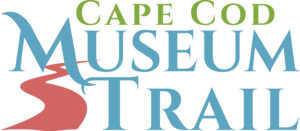
Archaeology work began informally in 2009 when Association volunteers removing modern modifications to the late 18th century farmhouse began to discover artifacts beneath the floorboards. Not only did the initial rehab work reveal its structure but also gave significant hints about Richard Taylor’s 17th century house. This work has since grown into an organized, multi-year effort to preserve and learn about the past.
Our archaeologist Craig Chartier has led several meticulous digs that produced breakthrough discoveries of the original Taylor family settlement as well as confirmed ancient Native American activities.

On the prehistoric front we have established a time line that suggests Native Americans occupied parts of the farm on a seasonal basis at least as long as 3500 years ago. This is confirmed in part by radiocarbon dating. Our discoveries include a storage pit probably used to store dried corn or nuts, cooking fire locations and sites for seasonal housing called wetus. Artifact discoveries include projectile points, stone tools and tool making debris. These objects help us appreciate what Native people were doing here on a day-to-day basis when it came to farming, fishing, trading and collecting food.

Community involvement is a key
We are grateful for the generous Community Preservation grants awarded by the Town of Yarmouth over the past several years. These grants have allowed us to hire a professional archaeologist to carefully plan field investigations and produce thorough follow-up analytic reports. In 2013, the town Community Preservation Committee named the Association archaeology program as its “project of the year.”
We are also indebted to the volunteers who donate valuable time to our fieldwork efforts. In 2014, for instance, sixty volunteers contributed almost 1300 hours to the intensive dig that produced the outline of the original farmhouse and subsequent addition.
Join the Archaeology Team
Volunteers are always welcome to join our fieldwork team. The farm dig is a singular opportunity to participate in a hands-on local history project. Previous experience is helpful but not necessary, as we will train new volunteers.
If you are interested in helping with future fieldwork, please contact Jack Duggan or call 508-385-8631 for more information.

Leave A Comment